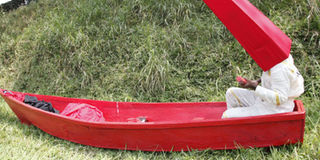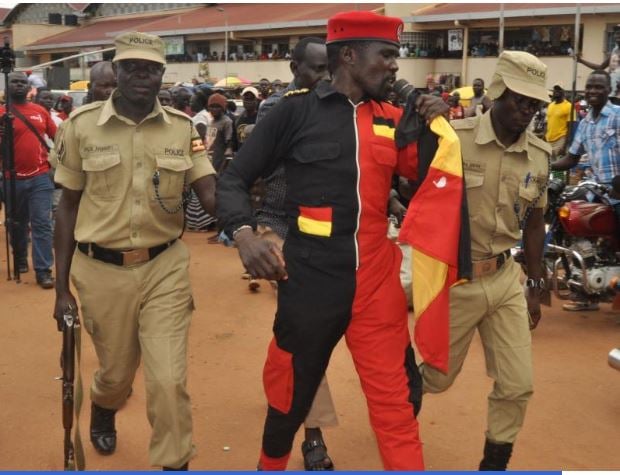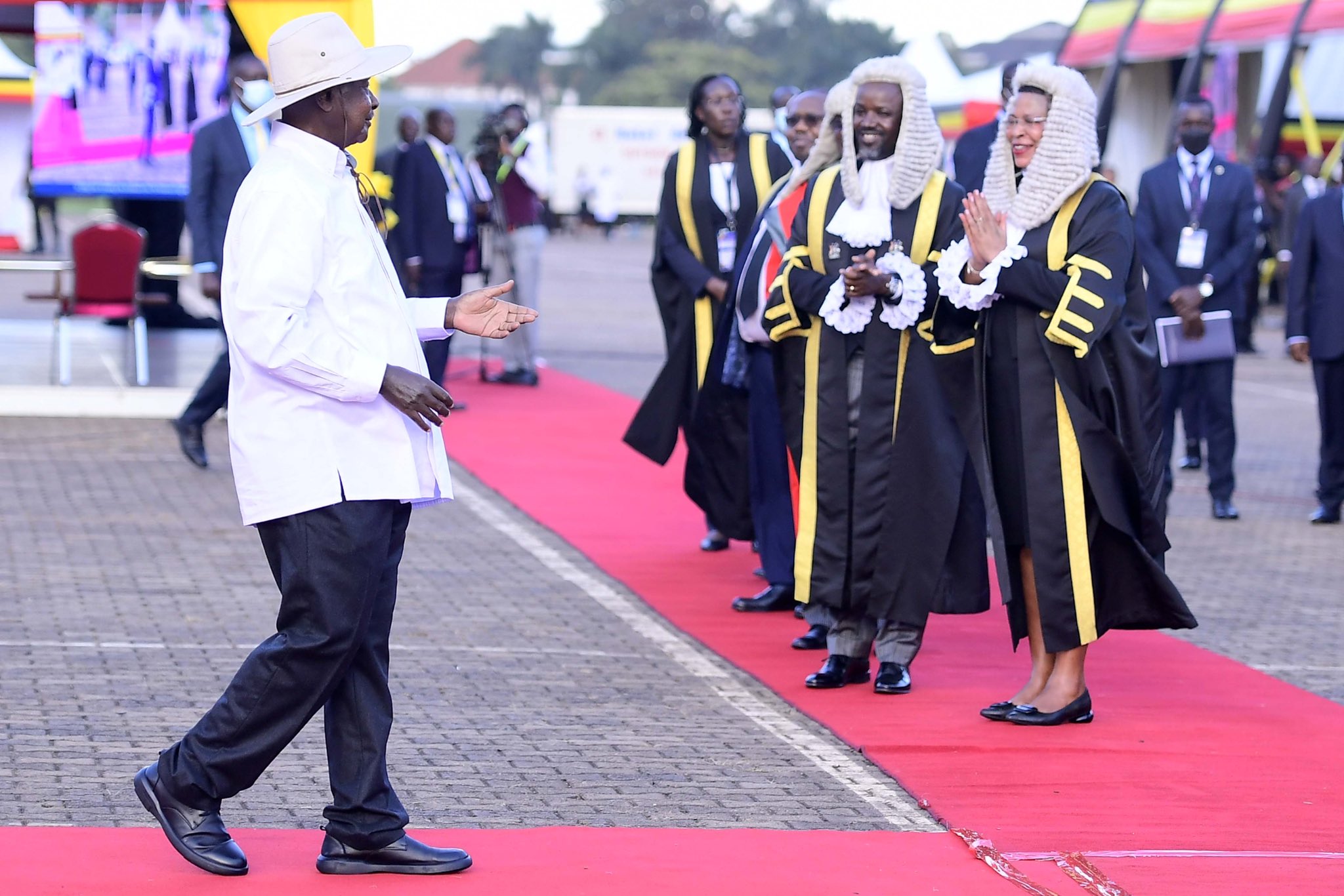Kampala Celebrates Seven Hills in Art Biennale

Many of Dennis Mubiru’s works may seem like pictures drawn by a child but actually carry alot of meaning. Photo by Rachel Mabala
At Seven different locations across Kampala, up to 25 artists are exhibiting their collective works representative of the seven hills upon which famous cities like Rome, Athens, Yaounde and San Francisco are built. Kampala’s seven hills contribute to how people settle, live and move.
The second art biennale which last week begun at the Uganda Museum with Oscar Kibuuka Mukisa’s photography in monochrome showcasing the subject of mobility in human body motions and dance, shall run till 3 October.
The art works are spread over seven locations including Makerere Art Gallery, the Museum, Afri Art Gallery, Alliance Francaise, National Theatre, Nommo Gallery and Kampala Railway Station. On Saturday, artists gathered at the Railway Main Station where Alex Lyon (Uganda/Uk) and Immaculate Mali performed. Mali’s piece was a childhood memory about how she was taught how to ride a bicycle.
The art works are a fusion of modern contemporary art, blending all forms of acrylics on canvas, video and photography, mixed media, sculptures and installations to showcase urban Kampala amid the movement of people from across the globe into this city. However, with Kampala spread over more than 24 hills currently, artistes had to find contemporary means to tell that story.
Art works
Kibuuka used a series of evolution of break dance to- apart from showing motion and movement-exemplify its contribution to gender equality where female dance groups like Flawsome have emerged, along with freedom of expression through art.
Shiela Nakitende’s installation has multi-coloured wires running from a table panel that appears like post office boxes and the wires eventually move to a white board showing different uses including paying bills to UMEME and buying Hello Food.
Xenson Znja placed a backcloth tied box like with strings over a wheel burrow as through showing the carriage of history to the future. Kenya’s Isaac Karuiki used a sim card over a man’s ear to show the impact of digitalisation and the epoch of mobile networks like Safaricom which is also accessible in Kampala as across East Africa.
Charity Atukunda’s digitally rendered works have human like facial features, but these were crafted by hand. Matt Kayem said “I can draw the Eiffel tower yet I have never been there” in representation of his installation that shows a chair beside a table laddened with a Tv set tied by a sting holding a gourd (endeku).
At Afri Art Gallery the piece with melancholic images of black people around a gold train stood out because it explored the message of slavery and black race struggle.
Discussing Mobility & Migration
Perhaps to explain that diversity, artists were selected internationally. Other artists; Immaculate Mali (Uganda), Julien Creuzet, Virginie Yassef (France), Bogosi Sekhukhumi (South Africa), Elsadig Mohammed (Sudan), Wolf von Kries (German), Sajan Mani (India) participated in an artistic studies and residence to showcase how one can live, penetrate and move in the city of seven hills (Kampala). Their different art work tackle cultural diversity, architecture, religious syncretism, inclusive of Uganda’s past and present. There is also a selection of videos and photography which depicts the subject.
Other artists include Stacey Abe Gillian, Matt Kayem, Ronex Ahimbisibwe, Sheila Nakitende, Canon Rumanzi (Uganda) and Diakota Lubondo, Alden Paul Mvoutoukoulou (DRC).
Exhibition venues
• Makerere Art Gallery
• The Museum
• Afri Art Gallery
• Alliance Francaise
• National Theatre
• Nommo Gallery
• Kampala Railway Station.




